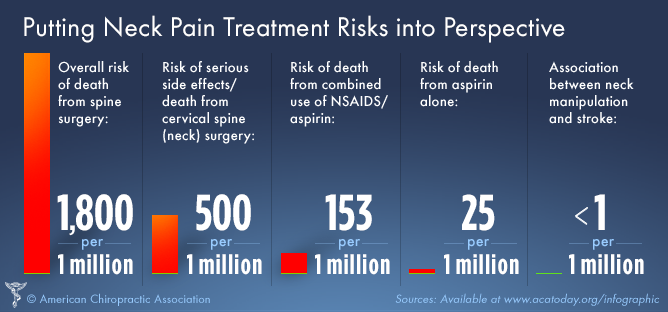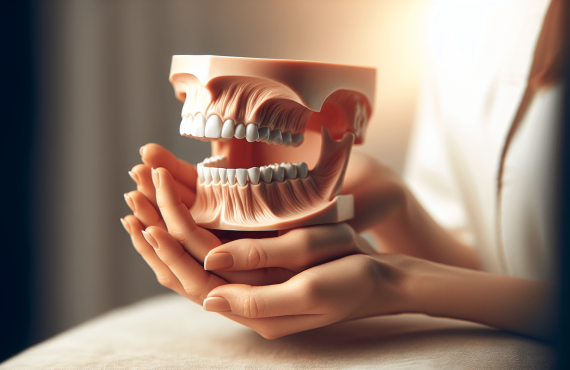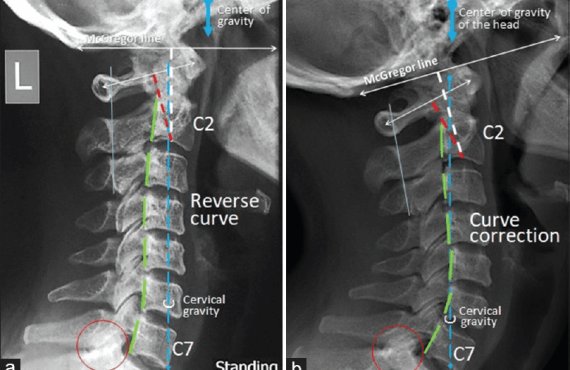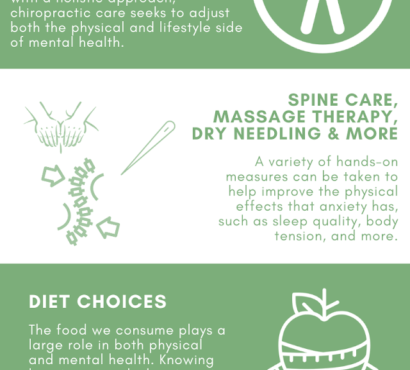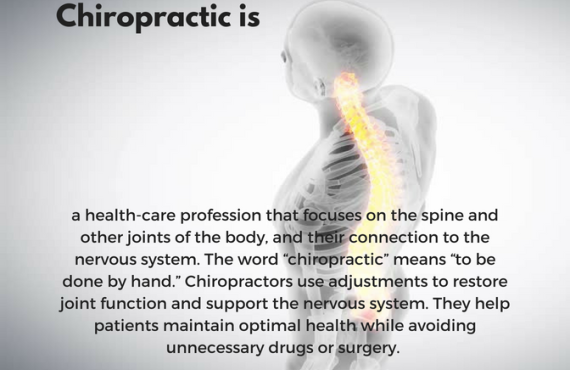If you’re looking for safe and effective chiropractic care in the Pensacola area, look no further than Henry Chiropractic. Led by licensed chiropractors Dr. Craig Henry and Dr. Aaron Hixon, this clinic is dedicated to improving the health and wellness of their patients. With a range of techniques, such as Diversified, Gonstead Spinal Manipulation, and Myofascial Release Technique, they provide personalized care to address back pain, neck pain, and other concerns. Whether you’re searching for relief or want to enhance your overall well-being, Henry Chiropractic is here to help.

This image is property of www.verywellhealth.com.
Table of Contents
Understanding Chiropractic Care
Chiropractic care is a branch of healthcare that focuses on the diagnosis and treatment of musculoskeletal conditions, particularly those affecting the spine. Chiropractors use non-invasive techniques, primarily spinal adjustments, to alleviate pain and restore proper alignment and function to the body. They believe that the body has an innate ability to heal itself and that by addressing the root cause of a problem, rather than just its symptoms, overall health and well-being can be improved.
The Goal of Chiropractic Care
The goal of chiropractic care is to optimize the body’s natural healing ability and promote overall wellness. By ensuring proper alignment of the spine and other joints, chiropractors aim to reduce pain, improve mobility, and enhance the body’s ability to function optimally. Chiropractors also focus on educating and empowering patients to take an active role in their own health through lifestyle modifications, exercise, and other self-care practices.
Common Conditions Treated by Chiropractors
Chiropractors can treat a wide range of conditions, both acute and chronic. Some of the most common conditions treated include back pain, neck pain, headaches, joint pain, sciatica, and sports injuries. Chiropractic care can also be beneficial for conditions such as arthritis, fibromyalgia, carpal tunnel syndrome, and even digestive disorders. By addressing the underlying issues causing these conditions, chiropractors aim to provide long-term relief and help patients achieve optimal health.
Qualifications and Training of Chiropractors
To become a chiropractor, individuals must complete a rigorous education and training program. Chiropractic education typically consists of four years of undergraduate study followed by four years of chiropractic college. During this time, students learn about anatomy, physiology, biomechanics, diagnosis, and various chiropractic techniques. After graduating, chiropractors must obtain a license to practice in their respective states, which requires passing national and state board examinations.
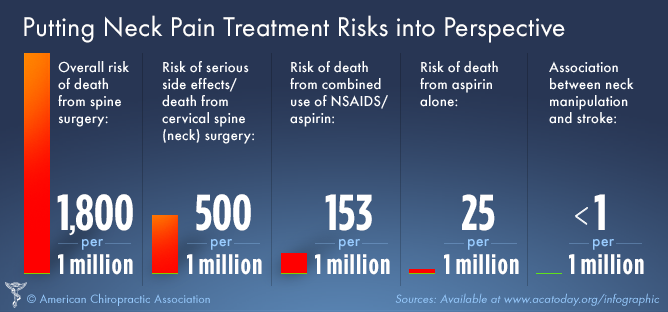
This image is property of images.squarespace-cdn.com.
Education and Licensing Requirements
Chiropractors must graduate from a chiropractic college accredited by the Council on Chiropractic Education (CCE). They are then required to pass the National Board of Chiropractic Examiners (NBCE) exams, which assess their knowledge and competency in various areas of chiropractic care. Additionally, chiropractors must obtain a state license, which entails meeting specific requirements set by the state licensing board. These requirements may vary from state to state.
Continuing Education and Certification
Continuing education is vital for chiropractors to stay up-to-date with the latest research, techniques, and advancements in the field. Many states require chiropractors to complete a certain number of continuing education hours every year to maintain their licenses. Additionally, chiropractors can pursue specialty certifications in areas such as sports chiropractic, pediatric chiropractic, or rehabilitation to further enhance their skills and knowledge in specific areas of practice.

This image is property of kordonowy.com.
Importance of Choosing a Qualified Chiropractor
Choosing a qualified chiropractor is essential to ensure that you receive safe and effective care. Look for a chiropractor who is licensed, has completed a reputable chiropractic program, and regularly participates in continuing education. It is also helpful to consider their experience and specialization if you have specific concerns or conditions. Reading patient reviews and testimonials can provide valuable insights into the chiropractor’s approach and patient satisfaction.
Benefits of Chiropractic Care
Chiropractic care offers numerous benefits for patients of all ages. Some of the key benefits include pain relief and management, improved range of motion, and enhanced athletic performance.
Pain Relief and Management
Chiropractic care is highly effective in relieving pain, particularly in the back, neck, and joints. Through gentle adjustments, chiropractors can alleviate pressure on nerves, reduce inflammation, and promote proper alignment, resulting in pain relief and improved overall function. Chiropractic care can be especially beneficial for conditions such as chronic back pain, migraines, and arthritis.
Improved Range of Motion
By addressing joint restrictions and spinal misalignments, Chiropractic adjustments can help improve range of motion and flexibility. This is particularly important for athletes and individuals who engage in physical activities that require a wide range of motion. Chiropractic care can help athletes recover from injuries faster, improve their performance, and prevent future injuries by ensuring optimal joint function.
Enhanced Athletic Performance
Chiropractic care has gained popularity among athletes due to its ability to optimize performance. By addressing musculoskeletal imbalances and promoting proper alignment, chiropractic adjustments can help athletes achieve better biomechanics, improved balance, and increased strength. Regular chiropractic care can also aid in injury prevention, enhance muscle recovery, and improve overall athletic performance.

This image is property of hillfunctionalwellness.com.
Potential Risks and Safety Concerns
While chiropractic care is generally safe and well-tolerated, there are some potential risks and safety concerns to be aware of. It is important to understand that these risks are relatively low and can be minimized by choosing a qualified and experienced chiropractor.
Minor Side Effects of Chiropractic Adjustments
Some patients may experience mild side effects after chiropractic adjustments, such as temporary soreness, stiffness, or fatigue. These side effects, often referred to as “reactions,” are normal and usually resolve within a day or two. Drinking plenty of water, applying ice or heat, and gentle stretching can help alleviate any discomfort.
Rare but Serious Complications
Although rare, serious complications from chiropractic adjustments can occur. These include spinal cord injuries, herniated discs, and stroke. However, it is important to note that the incidence of such complications is extremely low, estimated to be less than 1 in 1 million adjustments. Chiropractors are trained to recognize and mitigate risk factors, and the vast majority of patients experience no adverse effects from chiropractic care.
Precautions for Specific Patient Groups
Certain patient groups, such as pregnant women, children, and individuals with osteoporosis or spinal abnormalities, may require special considerations and precautions when it comes to chiropractic care. Chiropractors are trained to adapt their techniques and treatment plans to ensure the safety and comfort of these patients. It is crucial to discuss any specific concerns or medical conditions with your chiropractor to ensure appropriate care.
Evidence-based Approach to Safety
Chiropractic care, like any healthcare profession, is guided by an evidence-based approach to ensure patient safety. Numerous research studies have been conducted to assess the safety and effectiveness of chiropractic care. These studies have consistently shown that chiropractic adjustments are safe and associated with minimal risk of adverse effects when performed by qualified professionals.
Research Studies on Safety of Chiropractic Care
There is a growing body of research supporting the safety of chiropractic care. Studies have investigated the incidence of adverse events associated with chiropractic adjustments and have consistently found them to be low. Many of these studies have focused on specific patient populations, such as the elderly or individuals with specific conditions, and have found chiropractic care to be well-tolerated and safe.
Systematic Reviews and Meta-Analyses
Systematic reviews and meta-analyses are comprehensive analyses of multiple research studies, providing a high level of evidence regarding the safety and effectiveness of a particular treatment. Several systematic reviews and meta-analyses have concluded that chiropractic care is safe, with a low risk of serious adverse events. These reviews have also highlighted the need for further research to better understand the safety profile of chiropractic care.
Guidelines for Safe Practice
To ensure safe and effective practice, chiropractors adhere to guidelines and standards set by professional organizations and regulatory bodies. These guidelines address issues such as patient assessment, informed consent, treatment techniques, and ongoing monitoring of patient progress. By following these guidelines, chiropractors are committed to providing the highest level of care while prioritizing patient safety.

This image is property of doc.vortala.com.
Communicating with Your Chiropractor
Effective communication and collaboration with your chiropractor play a crucial role in the success of your treatment. It is essential to provide a comprehensive medical history, including any previous injuries, surgeries, or medical conditions. This information allows the chiropractor to assess your overall health and develop a personalized treatment plan.
Providing a Comprehensive Medical History
By providing a comprehensive medical history, you enable your chiropractor to fully understand your health background and any factors that may impact your treatment. This includes information about any current medications or supplements, allergies, and previous treatments or surgeries. The more detailed and accurate your medical history, the better your chiropractor can tailor their approach to your specific needs.
Discussing Any Concerns or Fears
Openly discussing any concerns or fears you may have about chiropractic care is essential in building a trusting and collaborative relationship with your chiropractor. If you have any worries about the safety of specific techniques or potential side effects, your chiropractor can provide the necessary information and address any misconceptions. Clear communication ensures that you feel comfortable and confident in your treatment plan.
Asking Questions about Procedures and Risks
Don’t hesitate to ask your chiropractor questions about the procedures they will perform and the associated risks. Understanding the techniques, expected outcomes, and possible side effects can help you make informed decisions about your care. Your chiropractor should be willing to answer all your questions and address any concerns you may have, fostering a transparent and patient-centered approach to your treatment.
Choosing the Right Chiropractic Care Provider
Choosing the right chiropractic care provider is crucial to ensure that you receive the highest quality care. Consider the following factors when selecting a chiropractor:
Credentials and Qualifications
Check that your chiropractor is licensed and has completed a reputable chiropractic program. Look for accreditations from recognized governing bodies, such as the Council on Chiropractic Education (CCE). This ensures that the chiropractor has met the necessary educational requirements and adheres to professional standards of practice.
Experience and Specialization
Experience plays a significant role in a chiropractor’s ability to provide effective care. Consider the chiropractor’s years of experience and whether they have treated patients with conditions similar to yours. Additionally, some chiropractors specialize in certain areas, such as sports injuries or pregnancy care. If you have specific needs or concerns, look for a chiropractor with expertise in those areas.
Patient Reviews and Testimonials
Reading patient reviews and testimonials can provide valuable insights into the chiropractor’s reputation and patient satisfaction. Look for feedback regarding the chiropractor’s expertise, communication skills, and overall quality of care. While individual experiences may vary, positive reviews can be a good indicator of a chiropractor’s competence and commitment to patient well-being.
Initial Examination and Treatment Plan
When you first visit a chiropractor, they will conduct a comprehensive examination to assess your condition and develop a personalized treatment plan. This examination typically involves:
Comprehensive Assessment of Patient’s Condition
The chiropractor will perform a thorough assessment of your condition, which may include physical examinations, orthopedic tests, and neurological evaluations. They may also request diagnostic imaging, such as X-rays or MRIs, to gain a better understanding of your condition. This assessment helps identify any underlying issues and guides the development of an appropriate treatment plan.
Development of Personalized Treatment Plan
Based on the examination findings, your chiropractor will develop a personalized treatment plan tailored to your specific needs. This may involve a combination of chiropractic adjustments, therapeutic exercises, stretching, and other adjunctive therapies. The treatment plan will address the root cause of your condition and aim to alleviate pain, restore function, and promote overall wellness.
Informed Consent Process
Before initiating any treatment, your chiropractor will explain the proposed procedures, potential risks, and expected outcomes. This is known as the informed consent process, which ensures that you have a clear understanding of the treatment plan and the associated benefits and risks. It is important to ask any questions or express any concerns during this process to make an informed decision about your care.
Appropriate Techniques and Adjustments
Chiropractic care encompasses a variety of techniques and adjustments that can be tailored to individual patient needs. Some common techniques used by chiropractors include:
Different Chiropractic Techniques
Chiropractors may use various techniques to deliver adjustments and manipulate the spine or other joints. These techniques include specific spinal adjustments, diversified technique, Gonstead technique, activator method, and Thompson technique, among others. The chosen technique will depend on the patient’s condition, preferences, and the chiropractor’s expertise.
The Use of Manual Adjustments and Instruments
Chiropractors can perform adjustments using manual techniques, such as applying gentle pressure or thrusts to specific areas of the body. They may also use instruments, such as handheld devices or mechanical tables, to assist with the adjustments. The choice of manual or instrument-based adjustments depends on various factors, including the patient’s condition, comfort, and the chiropractor’s training.
Tailoring Treatment to Individual Patient Needs
Chiropractors understand that each patient is unique, and their treatment plans should reflect this individuality. They consider factors such as the patient’s age, health status, condition severity, preferences, and goals when determining the appropriate techniques and adjustments. This personalized approach ensures that the treatment is effective, safe, and aligned with the patient’s specific needs.
Monitoring Progress and Adjusting Care
Chiropractic care is a dynamic process that requires ongoing monitoring and adjustment. Your chiropractor will regularly evaluate your progress and make any necessary modifications to your treatment plan.
Regular Re-evaluation of Patient’s Condition
During your course of treatment, your chiropractor will conduct regular re-evaluations to assess your progress and adjust the treatment plan accordingly. This may involve repeating diagnostic tests, assessing pain levels, and evaluating changes in range of motion or functionality. By closely monitoring your condition, the chiropractor can ensure that the treatment remains on track and adapt it as needed.
Modifying Treatment Plan as Necessary
Based on the re-evaluation findings, your chiropractor may modify your treatment plan to account for changes in your condition, goals, or response to treatment. This may involve adjusting the frequency or intensity of adjustments, incorporating additional therapies or exercises, or introducing new techniques. By adapting the treatment plan, your chiropractor can optimize its effectiveness and tailor it to your evolving needs.
Collaboration with Other Healthcare Providers
Chiropractors recognize the importance of a collaborative approach to healthcare. When necessary, they may refer patients to other healthcare professionals, such as physical therapists, orthopedic specialists, or massage therapists, to ensure comprehensive and coordinated care. By working together with other providers, chiropractors can enhance patient outcomes and facilitate a holistic approach to health and wellness.
In conclusion, chiropractic care offers numerous benefits, including pain relief, improved range of motion, and enhanced athletic performance. With proper training, qualifications, and ongoing education, chiropractors can provide safe and effective care for a wide range of conditions. By communicating openly with your chiropractor, choosing a qualified provider, and actively participating in your treatment plan, you can experience the full benefits of chiropractic care and optimize your overall health and well-being.


